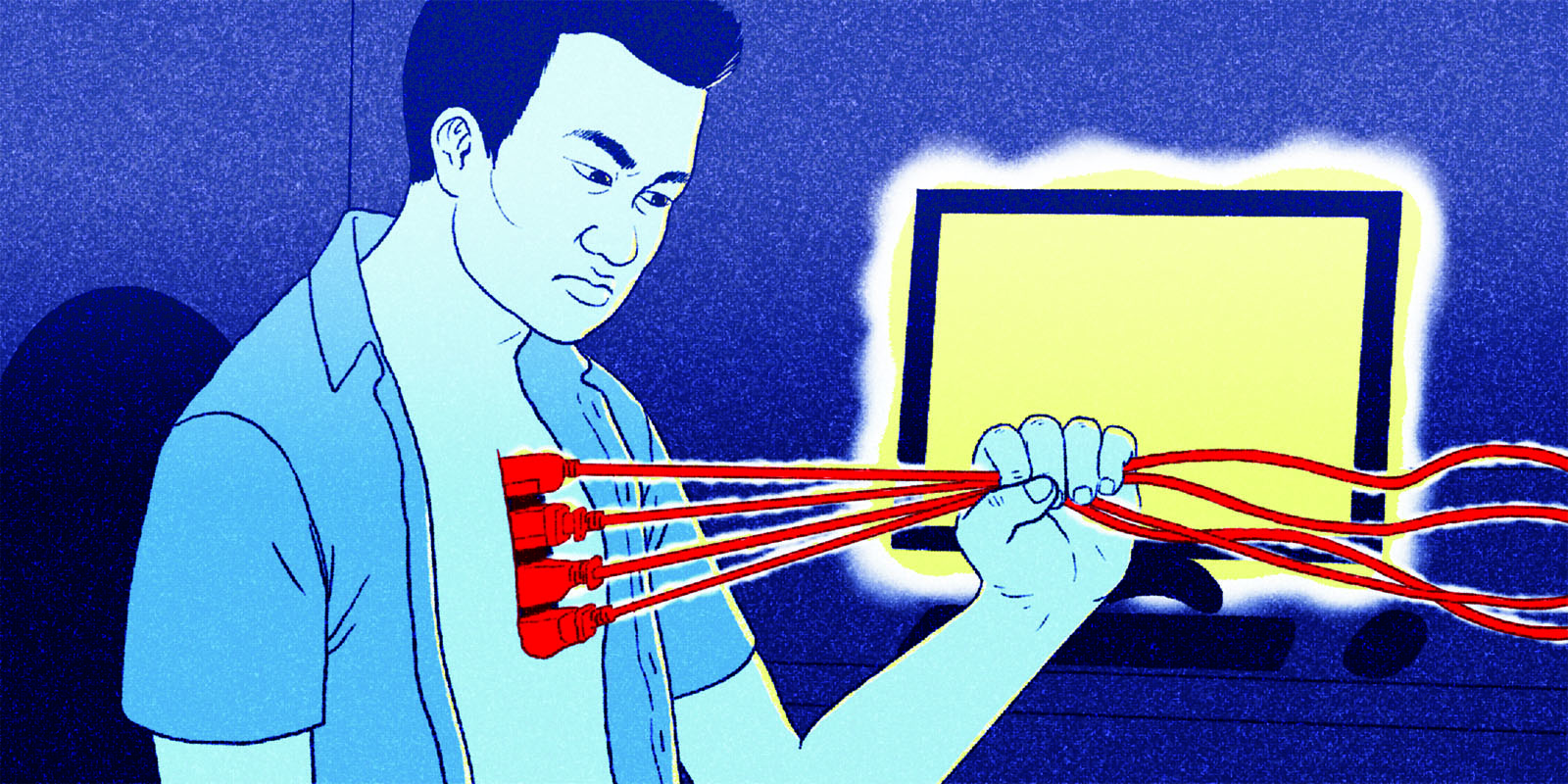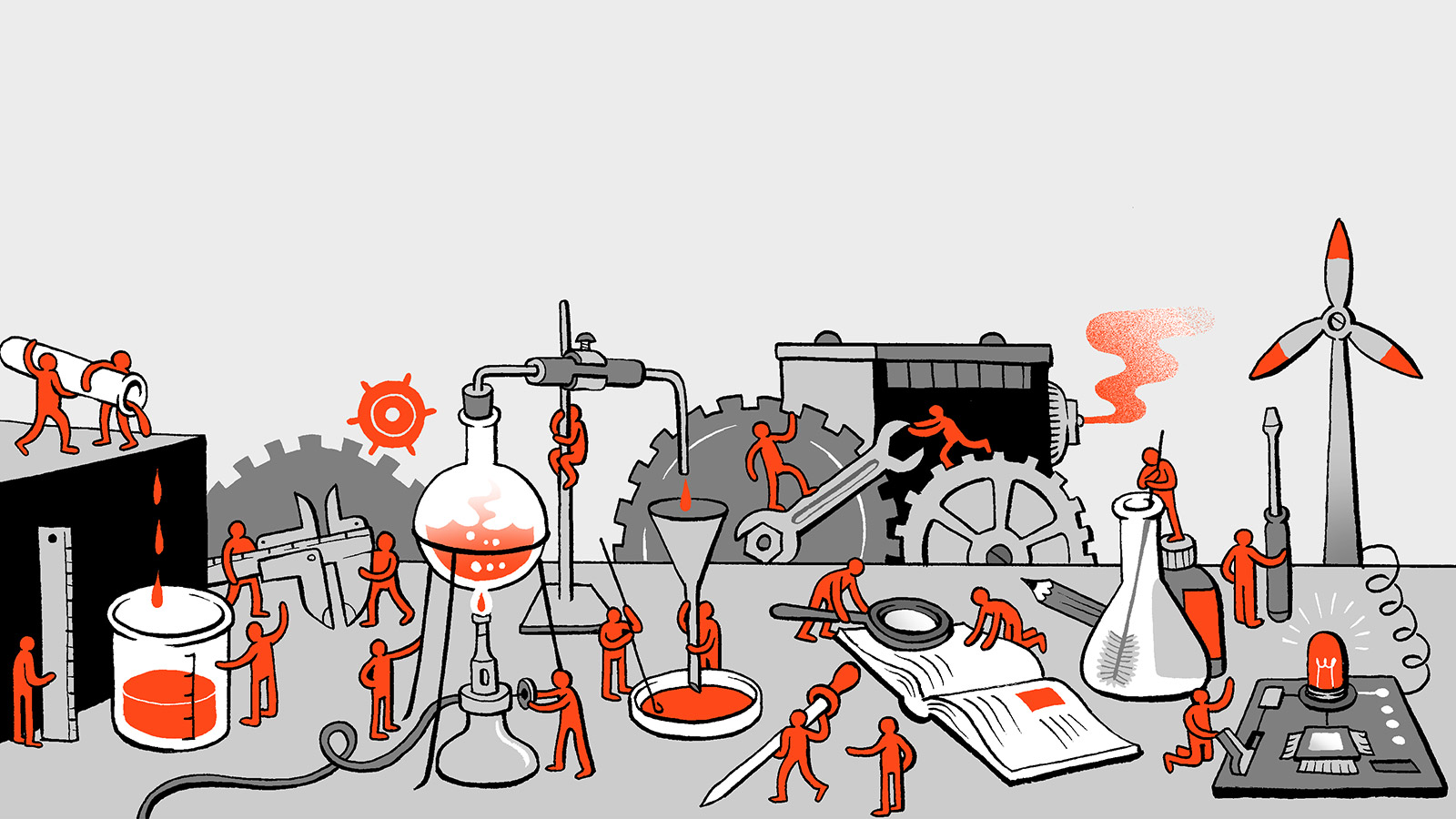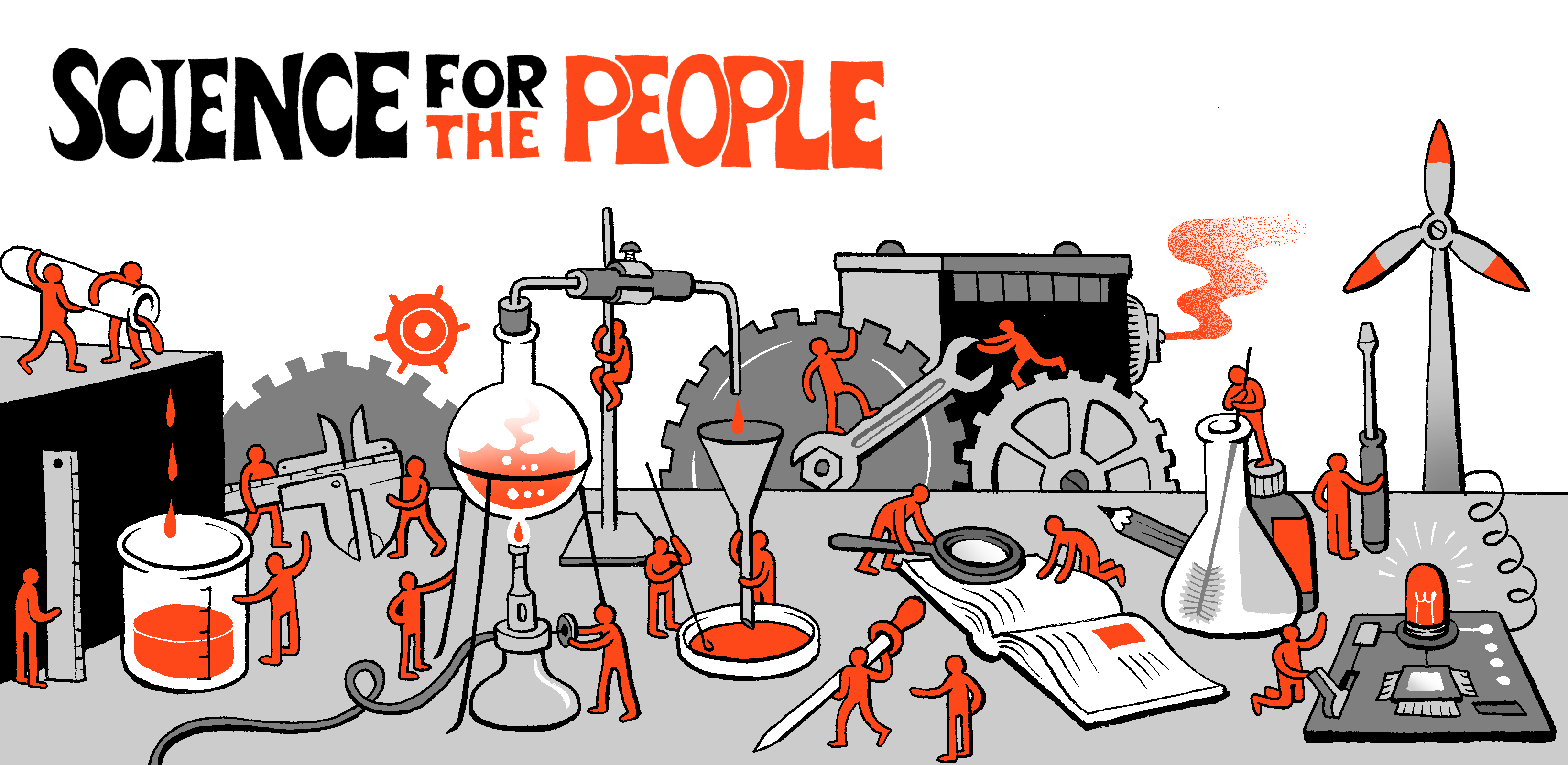Why the 996.ICU Movement Must Not Be Forgotten in the United States
By JS Tan
Volume 24, Number 2, Don’t Be Evil
This article is co-published in Rereading China: Science Walks on Two Legs. 此处阅读中文翻译

The year 2018 was big for the tech industry in China. Countless stories about the rise of artificial intelligence in China dominated the newscycle. Graduates from top Chinese universities competed for jobs at companies like Alibaba and Tencent. According to the China Academy of Information and Communications Technology, China’s digital economy was valued at $2.32 trillion, accounting for roughly thirty-eight percent of China’s GDP.1 From the outside, it looked as though the tech industry in China was unstoppable. That is why in the early months of 2019, a viral online mobilization led by Chinese tech workers caught the world by surprise. This online mobilization came to be called the anti-996 movement, named after the tech workers’ opposition to the brutal work schedule of 9 a.m. to 9 p.m., six days a week—or the 996.ICU movement, named after a rhyme that translates as “Working 996 will put you in the ICU.”2 Taking shape as a project on GitHub, the most popular open source code-sharing website used by programmers around the world, the mobilization quickly gained traction throughout social media in China and became a platform for Chinese tech workers to express their resentment towards the long working hours the industry demands.
The online mobilization featured three primary components. First was a crowd-sourced “black list” and “white list.” Companies, such as Alibaba and Huawei, that forced employees to work overtime were documented in the former, while companies with favorable (955) working hours were added to the latter. The second was the creation of an anti-996 license that, if applied to an open source project, would require any company using the project’s software to comply with Chinese labor laws that include a work week of forty-four hours and overtime pay.3 The third, and arguably the most interesting, component was the transformation of the project’s Issues page into a platform for tech workers to share their workplace frustrations. Traditionally, the Issues page was reserved for programmers to post and troubleshoot issues about the codebase; but in this case, anonymous programmers used the forum to compare their working conditions across different companies and share personal experiences of being forced to work overtime. In a work culture where complaining about one’s company publicly was taboo, the forum became a place where Chinese tech workers could openly discuss working conditions.
Within the span of a few weeks, the project on GitHub was bookmarked more than 258,000 times by Chinese tech workers, making it the second-most bookmarked project the website has ever hosted.4 Even projects backed by the deep pockets of Google, Microsoft, and Facebook have never received nearly as much traction. The brilliance of using the Microsoft-owned code-sharing platform, GitHub, lay in the dependence of many Chinese tech firms on the platform for critical infrastructure. Chinese tech companies use GitHub for hosting projects and accessing the countless open-source technologies that engineers, data scientists, and researchers have published on the platform; code for artificial technology is typically freely hosted on GitHub. In this sense, the mobilization took place on the means of production: blocking GitHub in China would not only be a major inconvenience to tech companies who rely on the platform for their day-to-day work but would also kneecap Chinese researchers’ ability to participate in research communities that use the platform as a kind of shared infrastructure. Because of the role that GitHub plays in the Chinese tech industry’s ecosystem, censoring the campaign and silencing dissenting employees wasn’t easy. Tencent and Alibaba blocked the URL of the anti-996 project on their web browsers, but this was easily sidestepped by using other browsers such as Chrome or Firefox.
This online mobilization came to be called the anti-996 movement, named after the tech workers’ opposition to the brutal work schedule of 9 a.m. to 9 p.m., six days a week—or the 996.ICU movement, named after a rhyme that translates as “Working 996 will put you in the ICU.”
As the GitHub project was shared throughout the industry, the mobilization became widely discussed in the mainstream media, bringing national attention to the working conditions of Chinese white-collar workers for the first time. Many users were sympathetic to the plight of the campaign. Even People’s Daily, an official government paper, criticized 996 working hours and suggested on social media that the Ministry of Labor Supervision should intervene in the illegal practice.5 However, tech executives pushed back against criticism of the 996 work schedule in order to protect their profit margins. Alibaba founder Jack Ma insisted that working overtime was a privilege while JD.com’s boss, Richard Liu, condemned the whole movement, calling its participants “slackers” and saying that those who weren’t willing to voluntarily work overtime were not his “brothers.”6 But despite its broad coverage in mainstream channels, the anti-996 movement didn’t end up alleviating the demanding working conditions faced by Chinese tech workers.
An Overworked Workforce
The anti-996 mobilization erupted in 2019, but the movement built on years of discontent among workers in the Chinese tech industry. For at least the past decade, China’s tech sector pushed its employees to accept a grueling culture of overtime work. Initially, this standard of working overtime was widely accepted. As millions of Chinese citizens logged onto the internet for the first time in the first decade of the new millenium, the rapidly expanding online population was a goldmine for tech entrepreneurs. With the task of inventing and building the Chinese tech industry left to the private sector, tech companies could easily motivate employees to work long hours with the alluring mission (and alluring pay) of building China’s digital future. As early as 2007, Huawei became the first tech company known to have mandated 996.7
The prospects for growth in the Chinese tech sector grew even further towards the end of the 2010s. After videos of unrest in Tibet circulated on YouTube in 2008, China began blocking foreign internet companies such as Facebook and Google, giving local internet companies the time and space to develop their own alternatives. With the Great Firewall safeguarding China’s massive market against foreign internet companies (not merely functioning to control public speech), China’s internet companies quickly developed on their own. But this wasn’t just a simple matter of playing copy-cat. Without Silicon Valley’s decades of software engineering experience, Chinese tech companies were tasked with building complex online services like social media and video streaming to serve the hundreds of millions of Chinese people who were coming online. As a result, Chinese software engineers found themselves working longer hours for China’s budding internet companies to catch up to their US counterparts.
During this period in the history of the Chinese internet, Chinese labor law still required companies to pay employees for overtime. But with the promise of innovation and excitement brewing in this new industry, employers got away with forcing workers to commit “voluntarily” to the 996 schedule. As in the US, many tech workers in China even believed that if they worked hard enough, they would be able to save enough money to start their own ventures. Of course, this never came true for the vast majority of tech workers. By the late 2010s, venture funding slowed for new Chinese tech firms, leaving a small cohort of corporate tech giants, including Alibaba and Tencent, to dominate the sector.8
Since then, the mammoth Chinese tech companies have bloomed. Because of the sheer size of China’s domestic market, which drives the majority of their business, these giants now compete neck and neck with their Silicon Valley counterparts. Yet, as these huge companies saturated China’s domestic market, undercutting or buying out their competitors, tech workers were forced to settle for a less ambitious dream: stability. Those not already employed by one of the giants worked long hours hoping eventually to secure a position, while those already on the payroll were forced to work the notorious 996 schedule. By 2019, tech worker discontent boiled over. When the Chinese economy took a turn, forcing China’s tech giants to lay off employees and cut bonuses, years of pent-up frustration from working overtime pushed tech workers over the edge, provoking the explosive anti-996 movement.
A Taxonomy of Chinese Tech Workers
In 2016, the tech industry surpassed financial services to become the highest paying industry in China. Some programmers who work for the Chinese tech giants have salaries that rival those of their American counterparts. For these elite programmers, the 996 schedule is a testament to their hard work; thus, many accept the work culture in exchange for social prestige and wealth. However, as the supply of tech labor has skyrocketed to meet demand, a deep rift in workers’ wages has emerged. Some Chinese tech workers have salaries higher than one million RMB (roughly 155,000 USD) per year. These workers are typically found working on cutting-edge technologies like artificial intelligence. However, salaries for technical roles span a huge range, and the majority of tech workers in China make far less. Some entry positions are compensated at only 6,000 RMB (roughly 930 USD) per month, which for workers living in tier-one cities in China is barely enough to make ends meet. An Echowall report calls this large spread of incomes among Chinese tech workers China’s “IT Pyramid”—a structure with a small group of extremely well-paid engineers at the top and a larger group of low-paid workers, with many layers in between.9 Despite being paid significantly less, most programmers in the lower rungs of the IT Pyramid are still forced to work the same brutal working schedules.
In contrast, US office workers and software engineers are divided into two groups: in-house and contract employees. As of 2019, Google, for example, employed 102,000 in-house employees and 121,000 contract workers.10 In-house workers (or full-time company employees) make upwards of a six-figure salary and enjoy countless perks like game rooms and free food. Despite performing similar tasks, contract workers often make much less money, have no benefits (e.g., sick leave, health care, paid vacation, pension), and are excluded from the perks that their in-house counterparts enjoy. Most large companies, like Google and Microsoft, also give contract workers a different color badge, which not only reflects their lower status but also keeps the workforce socially divided.11
Despite the potential for class conflict in this highly unequal industry, activism in the Chinese tech sector has remained focused on improving economic conditions within the constraints of the existing system and has stayed clear of ideological contention.
The tech industry’s deep inequality isn’t limited to people who spend their time coding or working other white-collar positions. China’s rapid growth in the delivery and ride-hail sectors is largely attributed to the millions of drivers spanning every major city in China. But despite technically being able to “choose” their own work hours, these drivers—like white-collar tech workers—often find themselves working long hours to make enough money just to get by.12 Like Uber or Lyft drivers in the United States, Chinese delivery workers are highly disenfranchised, extremely exploited, and subject to the whims of the algorithm. According to a report in Renwu magazine, delivery drivers in China can be heavily penalized for late deliveries, resulting in tremendous pressure to drive dangerously and often illegally just to keep up with the algorithm’s expectations.13
Despite the potential for class conflict in this highly unequal industry, activism in the Chinese tech sector has remained focused on improving economic conditions within the constraints of the existing system and has stayed clear of ideological contention. While delivery workers have protested sporadically throughout different Chinese cities, their demands have almost always targeted changes to the algorithms that govern their performance or pay-related issues. Even the anti-996 movement focused largely on the illegality of overtime work, and stayed clear of criticizing the Chinese government for turning a blind eye on such practices.
The US-China Relationship
As Chinese tech worker discontent escalated to a breaking point in 2019, another important factor became salient—China’s rapidly deteriorating relationship with the United States. While these two phenomena may seem unrelated, the overlap of the anti-996 movement and heightened US-China tensions is not coincidental.
Since their inception, Chinese tech companies have primarily served the domestic Chinese market. But their supply chains have always relied heavily on other countries. At the hardware level, China is still several years behind in semiconductor development; this means that Chinese tech companies import large quantities of US-made semiconductors. According to China Money Network, semiconductors accounted for $122 billion in Chinese imports.14 At the software level, Chinese tech firms continue to benefit from US-led open-source projects, which contain most of the cutting-edge research in artificial intelligence, among other new software libraries.
By 2018, as the Chinese tech sector found itself deeply enmeshed in the global economy, Trump’s trade war and his administration’s persistent accusation of Chinese theft of intellectual property became a serious threat to China’s already slowing tech sector. As political tensions worsened, the threat of ongoing economic retaliation from the United States scared away further investment in the Chinese tech sector. This resulted in a dearth of venture funding which had propped optimism in the industry.
Tech workers should remember that the working conditions that ignited the anti-996 movement are not unique to China and could just as easily be found in the United States.
Tensions escalated even further after the Washington-provoked arrest of Huawei’s Chief Technology Officer in late 2018 and the banning of the company’s products in the United States. Soon after, investors began to worry that the United States was gearing up for more aggression towards Chinese companies, resulting in lower confidence in the Chinese tech sector. The bike-sharing company Ofo, which enjoyed explosive growth prior to 2019, was suddenly in crisis with their users demanding refunds for deposits. The e-commerce giant JD.com in 2018 registered $342 million (roughly 2.3 billion yuan) in losses. Meanwhile, China’s biggest internet company, Tencent, witnessed the biggest drop in profits in over a decade.15 While US policies threatened the Chinese tech sector’s bottom line, they also applied downward pressure on tech workers. Delivery companies such as Meituan and JD.com cut loose large portions of their workforce. Other tech companies reduced wages and slashed bonuses. In light of the economic downturn, tech executives expected their employees to work even longer hours.
These losses can’t entirely be attributed to a decaying US-China relationship. However, it would be a mistake to overlook the deep—and politically fickle—relationship that tech capital has with both countries. Indeed, the economic leverage that the United States had over China made Chinese officials reflect on the tech sector’s deviation from a goal they had set for themselves long before: self-reliance. Keenly aware of these dynamics, President Xi Jinping in recent years has strongly encouraged the tech sector to return to home-grown innovation.16 This means decoupling from the West, reducing interdependence, and insulating itself from other kinds of vindictive US policies.
Transnational Tech Solidarity
Just as the relationship between the US and Chinese tech sectors has deteriorated, so has the relationship between tech workers and their companies in both countries. Alongside the Chinese tech workers’ mobilization against the 996 work schedule, US-based tech workers have also revolted en masse across the United States. According to the Collective Action in Tech archive, there were more than 119 collective actions taken by tech workers in 2020, compared to 11 in 2017.17
One particular area of worker discontent has focused on the tech industry’s support of national security, namely Silicon Valley’s increased collaboration with the US military. While these struggles may differ, tech workers from both countries have an opportunity to unite against an increasingly unaccountable tech industry.
Shortly after the anti-996 project went viral, US-based Microsoft workers gave us a glimpse of what this kind of transnational unity can look like. Because the anti-996 movement relied on Microsoft-owned code-sharing platform GitHub, there were concerns that the Chinese government would pressure Microsoft to remove the project. This prompted Microsoft workers to publish a letter that demanded Microsoft and GitHub keep the anti-996 project uncensored and accessible to Chinese tech workers.
In their letter, they wrote:
In response to these events, we, the workers of Microsoft and GitHub, support the 996.ICU movement and stand in solidarity with tech workers in China. We know this is a problem that crosses national borders. These same issues permeate across full time and contingent jobs at Microsoft and the industry as a whole. Another reason we must take a stand in solidarity with Chinese workers is that history tells us that multinational companies will pit workers against each other in a race to the bottom as they outsource jobs and take advantage of weak labor standards in the pursuit of profit. We have to come together across national boundaries to ensure just working conditions for everyone around the globe.
Like the 996.ICU project, the letter by Microsoft workers was published on GitHub and was open to other workers in the United States to sign in a show of transnational solidarity. The letter’s global response was also encouraging: tech workers from Turkey, Singapore, the UK, France, and Spain also participated in the forum and added their names to the signatories. Some even translated the statement of solidarity.18 Chinese tech workers responded to this show of support exuberantly, sharing their gratitude on the GitHub Issues forum attached to the letter. But while this moment of transnational solidarity was a cause for celebration, the limitations of the action must also be taken seriously. Within a matter of weeks, chatter about the statement of solidarity subsided. It remains unclear whether the connections that were made have lasted beyond that moment.
Tech workers should remember that the working conditions that ignited the anti-996 movement are not unique to China and could just as easily be found in the United States. Already, the invisible army of contract tech workers employed by companies like Microsoft and Google face poor working conditions and low pay—a far cry from the conventional portrait of tech work as cushy and well-paying.
In telling the story of the anti-996 movement, we must also recognize what it accomplished, and what challenges remain. Although the movement catalyzed a nationwide discussion about the toxicity of white-collar work culture in China and received support from tech workers in the United States and other countries, many large tech companies in China remain committed to the practice of 996. Against the backdrop of a new tech Cold War and increasing talk of decoupling the US from China, Chinese tech companies have all the more reason to demand more from their workers. Indeed, this hostile climate between the US and China will only encourage elites and politicians in both countries to turn to nationalist competition.
But in the face of nationalism, only workers stand to lose. While business and political elites worldwide will play workers against each other, tech workers must look for common ground, share organizing tactics, and constantly learn from one another. Building solidarity among tech workers in these two countries and across the globe is the only way to demand better working conditions for all tech workers.
If you liked this article, please consider subscribing or purchasing print or digital versions of our magazine. You can also support us by becoming a Patreon donor.
Notes
- Xinhua, “China’s digital economy contributes more to GDP: report,” Xinhua News, http://www.xinhuanet.com/english/2018-12/23/c_137693489.htm, December 23, 2018.
- Klint Finley, “How GitHub Is Helping Overworked Chinese Programmers,” Wired, April 4, 2019, https://www.wired.com/story/how-github-helping-overworked-chinese-programmers/.
- National People’s Congress of the People’s Republic of China, “Labour Law of the People’s Republic of China,” 1994, http://www.npc.gov.cn/zgrdw/englishnpc/Law/2007-12/12/content_1383754.htm.
- This number has typically been taken to represent Chinese tech workers, but many accounts have anonymous usernames, making it impossible to know for certain.
- People’s Daily Official Account, “Gongzuo 996 shengbing ICU, laodong jiancha bumen ying jiji jieru” (996 working hours will send you to the ICU, the Labor Inspection Department should intervene), Weibo, April 5, 2019, https://m.weibo.cn/status/4357697258275940.
- Karen Gilchrist, “Alibaba founder Jack Ma says working overtime is a ‘huge blessing,’” CNBC, April 15, 2019, https://www.cnbc.com/2019/04/15/alibabas-jack-ma-working-overtime-is-a-huge-blessing.html; Josh Horwitz and Brenda Goh, “China’s JD.com boss criticises ‘slackers’ as company makes cuts,” April 14, 2019, https://www.reuters.com/article/jdcom-labour/rpt-chinas-jd-com-boss-criticises-slackers-as-company-makes-cuts-idUSL3N21W00U.
- According to a post on the knowledge-sharing site Zhihu, the earliest evidence of a 996 schedule began with Huawei in 2007. Huawei also used a 995.5 schedule, otherwise known as big-small weekends, as early as 2000; this means alternating between one-day and two-day weekends. See https://www.zhihu.com/question/319575322.
- “China’s formerly white-hot tech sector is in the doldrums,” The Economist, March 9, 2019, https://www.economist.com/business/2019/03/09/chinas-formerly-white-hot-tech-sector-is-in-the-doldrums.
- Wu Jing, “Working 996,” Echowall, February 18, 2020, https://www.echo-wall.eu/chinese-whispers/working-996.
- Michael Grothaus, “Leaked doc: Google has more temporary and contract workers than full-time staff, raising concerns about its growing reliance on them,” Fast Company, May 28, 2019, https://www.fastcompany.com/90355826/leaked-doc-google-has-121k-temporary-and-contract-workers-globally-compared-with-102k-full-time-staff-raising-concerns-about-its-growing-reliance-on-them.
- Chinese tech firms also have a practice of hiring contract workers, but the dynamics can be very different. For example, some tech workers prefer contract work because contract workers, unlike in-house tech workers, typically get overtime pay. See: https://zhuanlan.zhihu.com/p/146512930. On color badges at Microsoft, see Todd Bishop, “Microsoft’s ‘Orange Badge’ Culture Gets Forum,” Seattle Pi, December 28, 2005, https://www.seattlepi.com/business/article/Microsoft-s-orange-badge-culture-gets-forum-1191262.php.
- Ele.me and Meituan, the two largest food delivery platforms, actually provide two types of platform work—service platforms and gig platforms. Both do food delivery. However, service platform delivery drivers are full-time employees who work for a service station; these workers typically do not get to choose their work hours. Gig platform drivers, on the other hand, can decide when they want to work. See Sha Hua, “In China, Tech-Worker Deaths Spark Online Backlash,” Wall Street Journal, January 17, 2021, https://www.wsj.com/articles/in-china-tech-worker-deaths-spark-online-backlash-11610888403.
- Renwu, “Waimai qishou, kun zai xitong li” (Delivery Riders, Trapped in the System), Zhihu, September 8, 2020, https://zhuanlan.zhihu.com/p/225120404. For an English-language article, see Savannah Billman, “Eleme, Meituan Scramble to Fix Driver Work Conditions amid Criticism,” Technode, September 11, 2020, https://technode.com/2020/09/11/eleme-meituan-scramble-to-fix-driver-work-conditions-amid-criticism/.
- Doris Yu, “China’s Technology Imports Reach $449B, Semiconductor Accounts For 70%,” China Money Network, February 7, 2019, https://www.chinamoneynetwork.com/2019/11/07/chinas-technology-imports-reach-449b-semiconductor-accounts-for-70.
- Lulu Yilun Chen, “Why Tencent Missed the Mark on Profit by Most in a Decade,” Bloomberg, March 21, 2019, https://www.bloomberg.com/news/articles/2019-03-21/tencent-profit-misses-estimates-as-games-slip-costs-swell.
- Paul Triolo, Lorand Laskai, Graham Webster, and Katharin Tai, “Xi Jinping Puts ‘Indigenous Innovation’ and ‘Core Technologies’ at the Center of Development Priorities,” New America: Cybersecurity Initiative, May 1, 2018, https://www.newamerica.org/cybersecurity-initiative/digichina/blog/xi-jinping-puts-indigenous-innovation-and-core-technologies-center-development-priorities/.
- JS Tan and Nataliya Nedzhvetskaya, “2020: A Year of Resistance in Tech,” Collective Action in Tech, December 31, 2020, https://collectiveaction.tech/2020/2020-a-year-of-resistance-in-tech.
- MS Workers, “Support 996.ICU,” GitHub Repo, July 7, 2019, https://github.com/MSWorkers/support.996.ICU (accessed January 24, 2021).





